Concept of a limit
The number \(A\) is called the limit of the sequence \(\{a_n\}\) if \(a_n\) is close to \(A\) for large values of n.
The number \(A\) is called the limit (at infinity) of the function f if \(f(x)\) is close to \(A\) for large values of x.
Note that this is closely related to the concept of a horizontal asymptote. If \(A\) is the limit (at infinity) of \(f\), then the line \(y=A\) is a horizontal asymptote of the graph of \(y=f(x)\).
Note that the function does not have to be defined at x=ax=a in order to have a limit. If the function happens to be defined at \(x=a\) and the limit is the same as \(f(a)\) we say that the function is continuous at \(x=a\).
The gradient at a point
Differentiation is a way to find the gradient (change in x over the change in y) of a function at any point, written as:
$$ f'(x) \space, \space y' \space, \space \frac{dy}{dx} $$
Tangent line to a point on a curve is a linear line with the same gradient as that point on the curve.
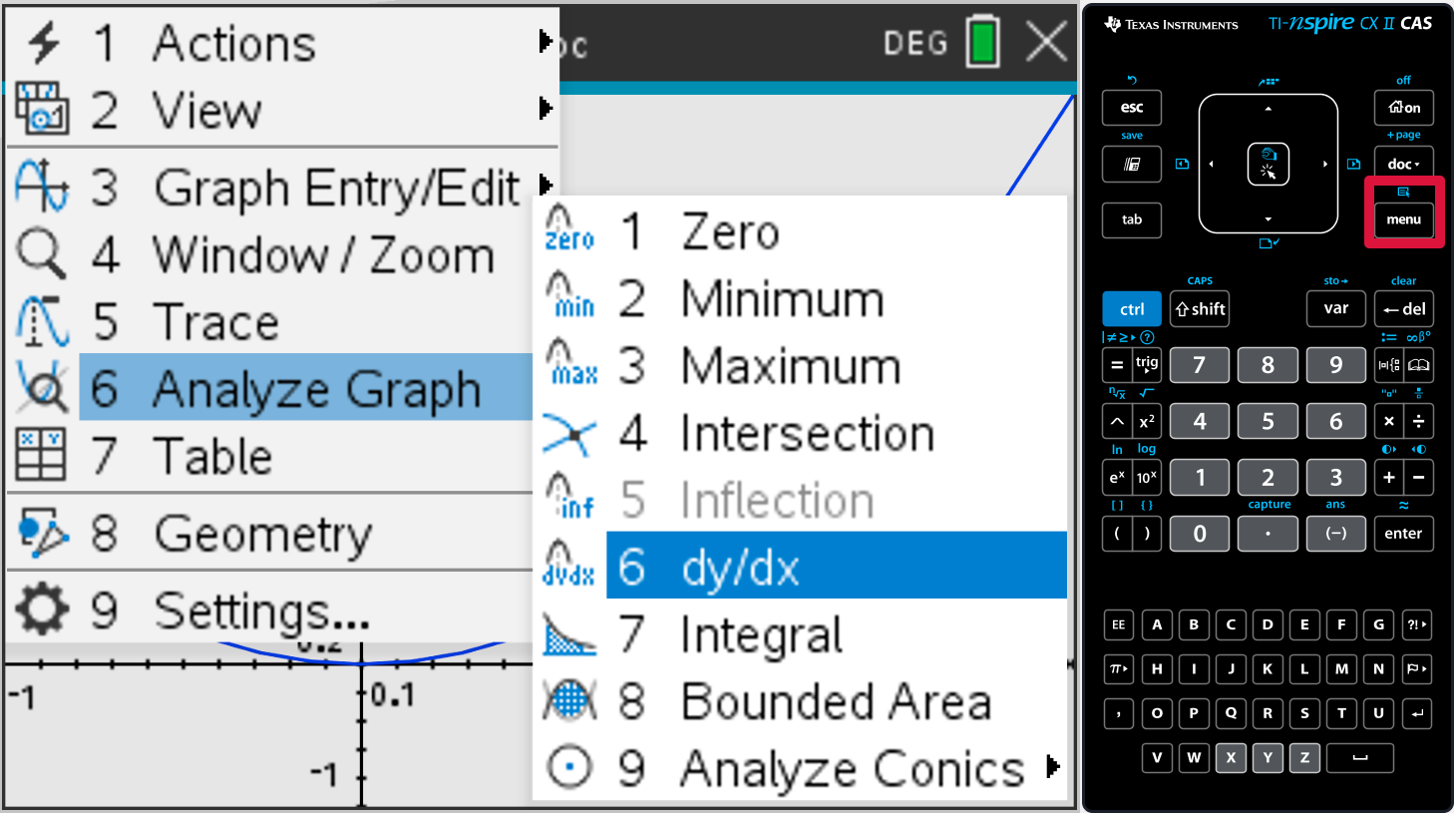
Use your calculator to find the gradient of the graph of \(y=ln(3x2+2)\) at \(x=1\).
Gradient function
Common forms of notation for the derivative are \(f'\), \(\dfrac{\mathrm{d}y}{\mathrm{d}x}\) and \(\dfrac{\mathrm{d}}{\mathrm{d}x}f\).
The diagram below shows the graph of the function f.
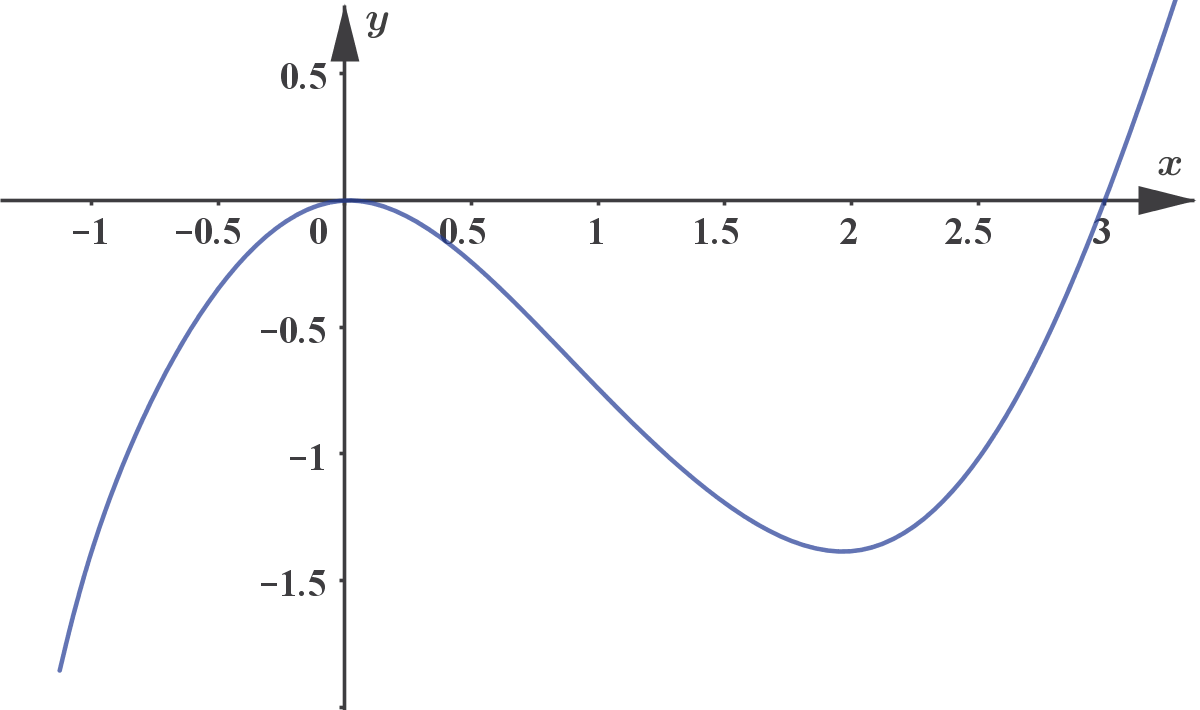
Given that \(f'(a)=−1\), \(f'(b)=0\) and \(f'(c)=3\).
Find the value of a, of b, and of c.
Ans: \(a=1\), \(b=2\), \(c=−1\)
Graphing the Derivative
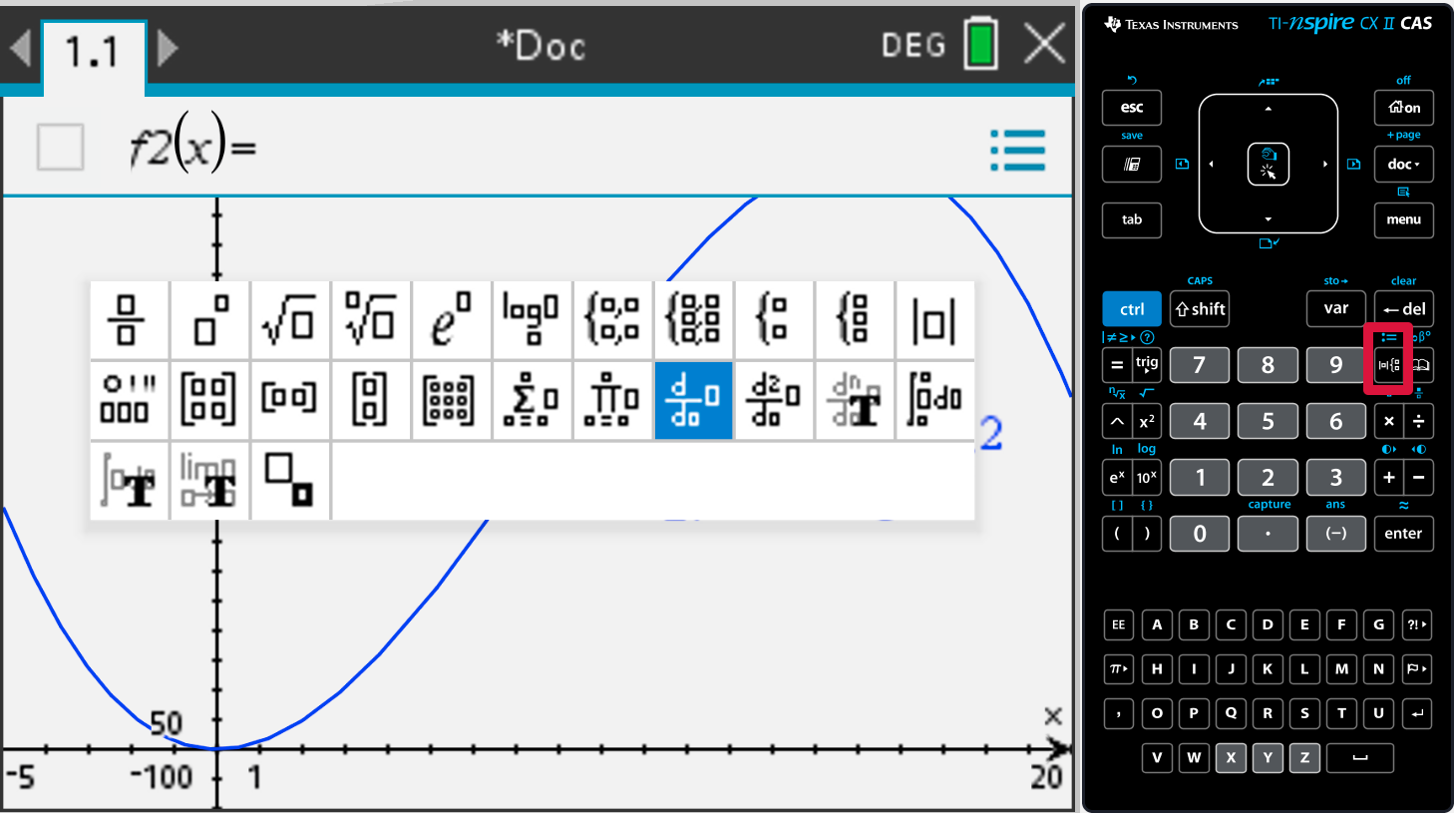
The function \(F\) is an anti-derivative of the function f if \(F'(x)=f(x)\).
The collection of all anti-derivatives of the function f is denoted by \( \displaystyle{\int f(x)\mathrm{d}x}\).
This is also called the indefinite integral of \(f\).
\(\displaystyle{ \int ax^n\mathrm{d}x=\dfrac{a}{n+1}x^{n+1}+c, }\) where c is any constant and \(n\ne -1\) is an integer.
^Given in the formula booklet
Integral of the sum or difference
Applications
Kinematics
Displacement (s), Velocity (v), Acceleration (a)

Graph properties
By the end of this subtopic you should be able to:
- identify properties of graphs based on the information given by the derivative:
- identify intervals where the function is increasing
- identify intervals where the function is decreasing
- identify the x-coordinates of turning points.
The power rule
If \(f(x)=x^n\), then \(f′(x)=nx^{n−1}\)
This rule is in the formula booklet.
The constant factor rule
If \(f(x)=ax^n\), then \(f'(x)=nax^{n−1}\).
This is not in the formula booklet. You need to remember this rule and, more importantly, make sure that you know how to use it.
The sum rule
If \(h(x)=f(x)+g(x)\), then \(h'(x)=f'(x)+g'(x)\).
This is not in the formula booklet. You need to remember this rule and, more importantly, make sure that you know how to use it.
The normal
\(M_Normal = - \frac{1}{M_Tangent}
The line that is perpendicular to the tangent to a curve at the point of tangency is called the normal.
Tangent - line with the same gradient as a point on a curve.
Normal - perpendicular to the tangent at a point
Both are linear lines with the general formula: .
Finding the Normal
- Use the derivative to find the gradient of the tangent. For normal
then do $$ m = \frac{−1}{slope \space of \space tangent}$$ - Input the x-value of the point into f (x) to find y.
- Input y, m and the x-value into to find c.
The area under a curve
The formula booklet gives the following:
The area between a curve \(y=f(x)\) and the x-axis, where \(f(x)>0\) is
\(A = \displaystyle{\int_a^b y\,\mathrm{d}x.}\)
Graphical Solve
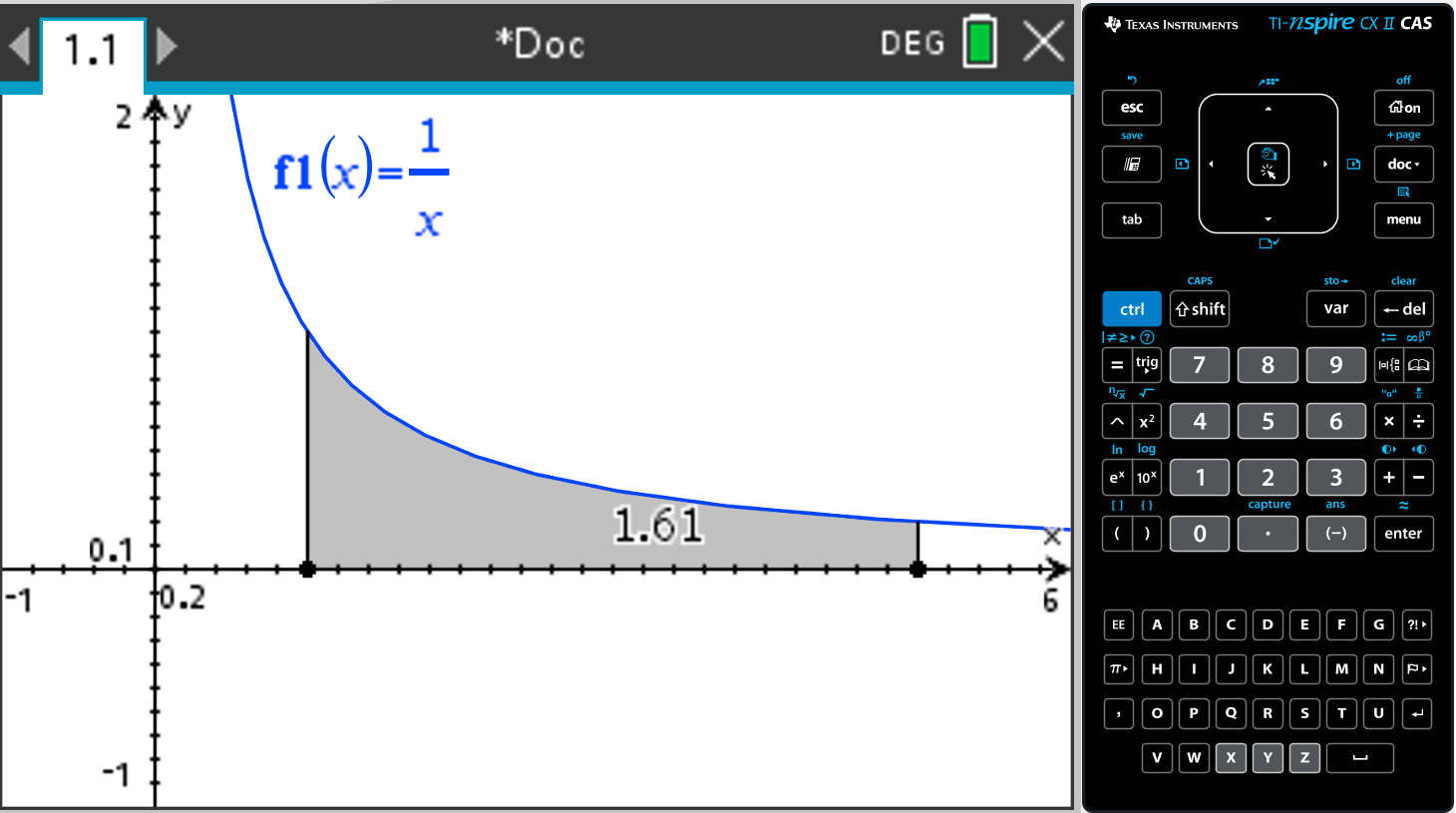
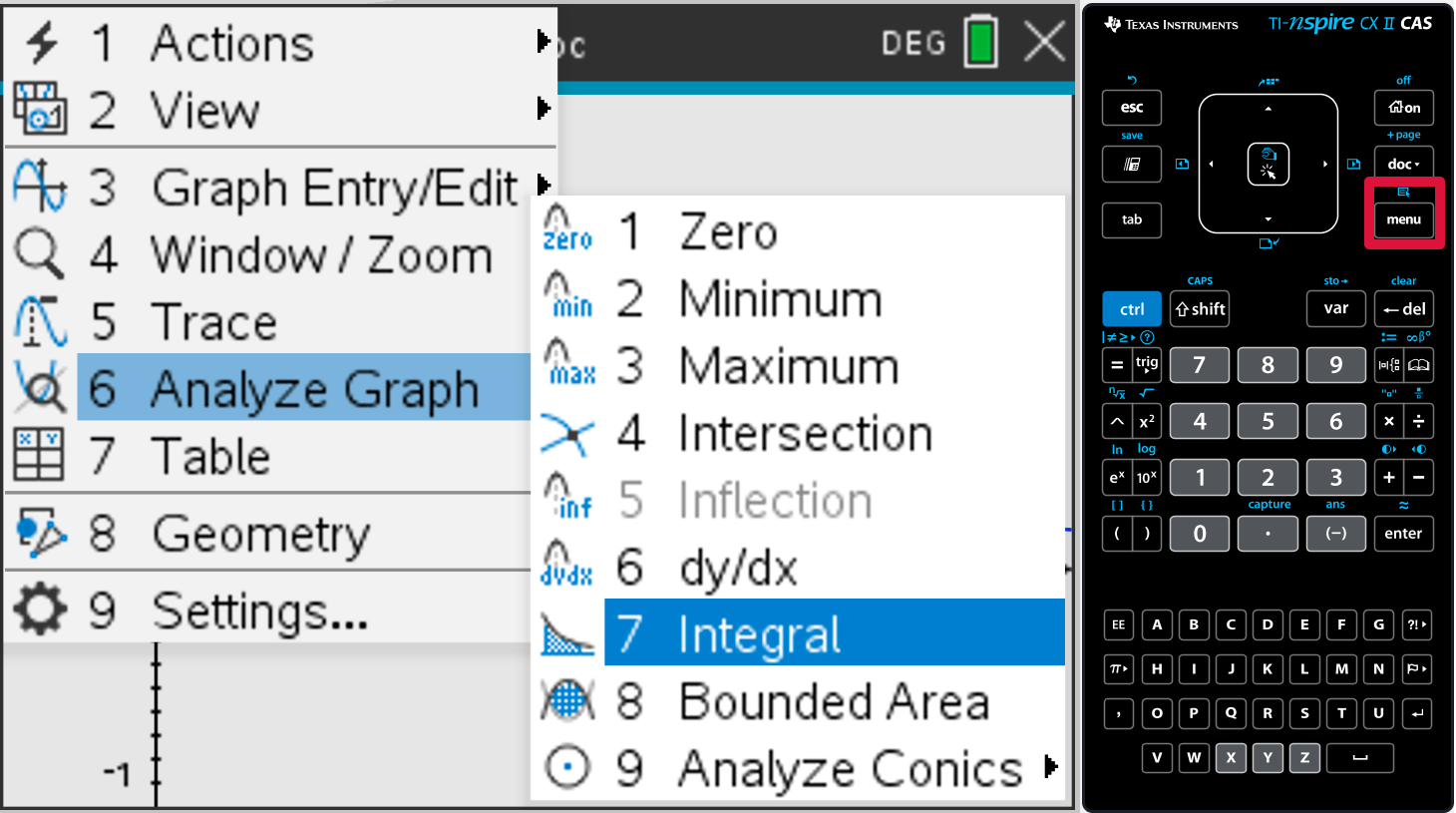
Numerical Solve
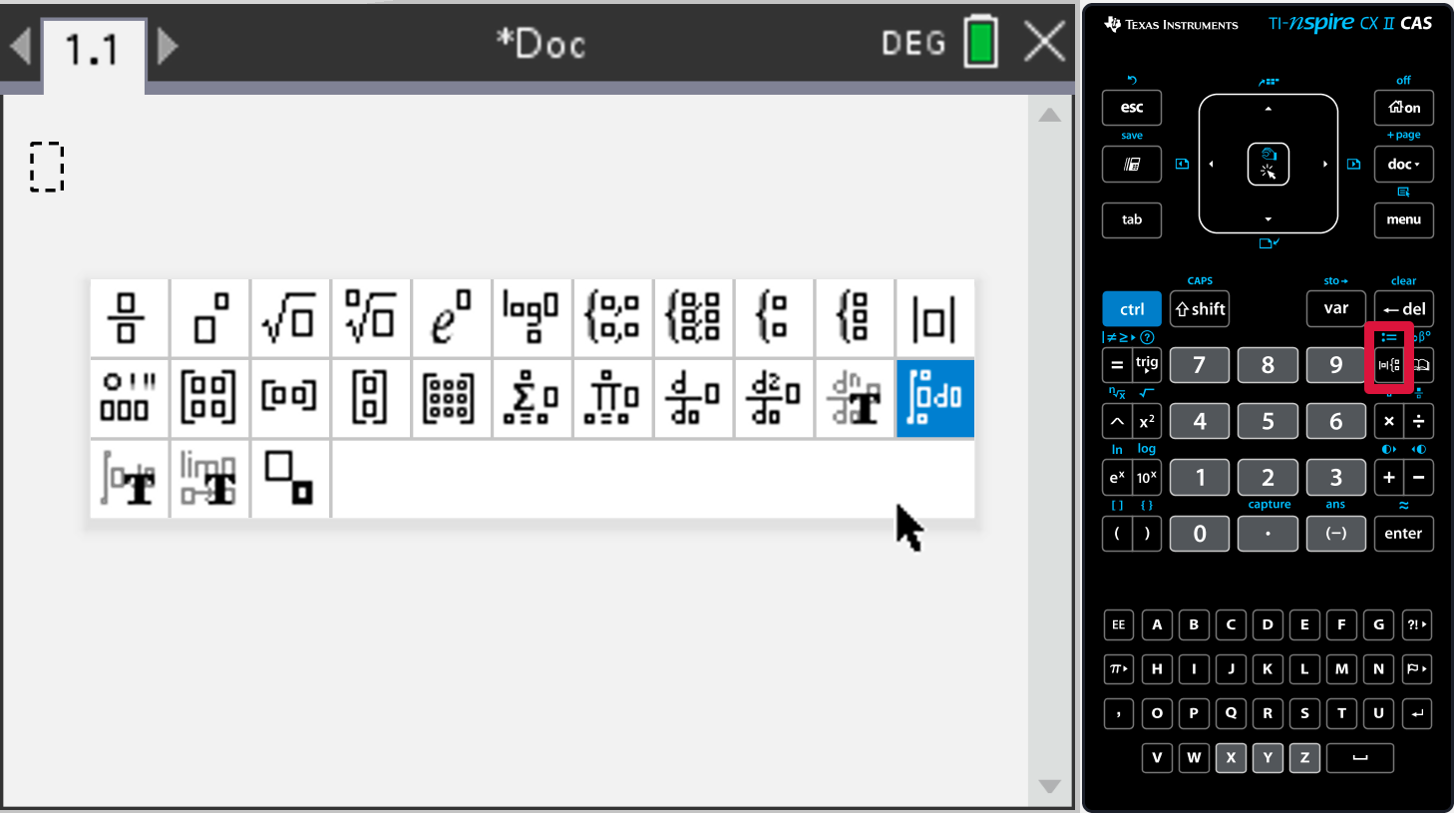
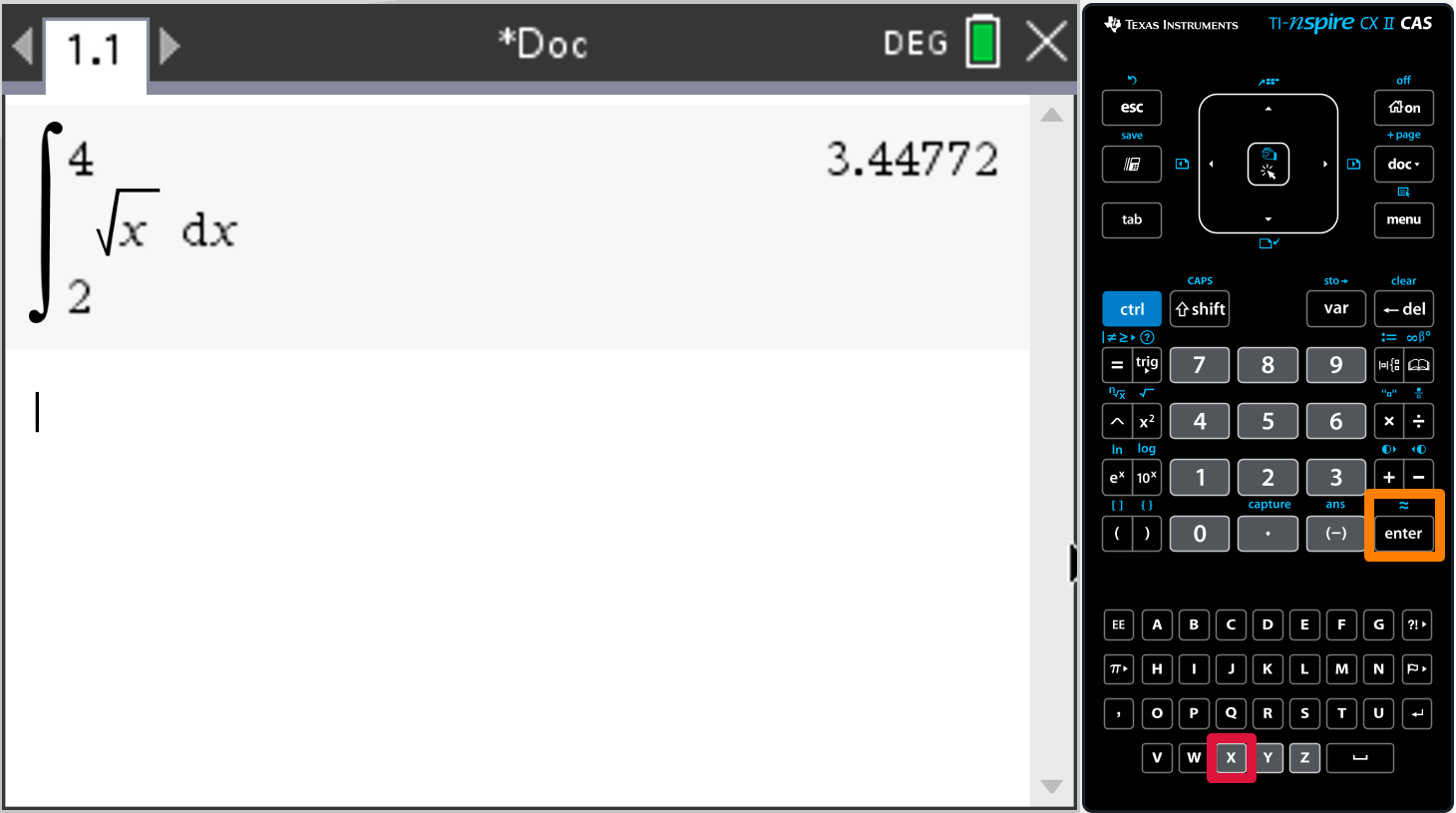
Further differentiation
Exponential Function
If \(f(x)=k\mathrm{e}^{ax+b}\), then the derivative is \(f'(x)=ka\mathrm{e}^{ax+b}\).
Product Rule
Product Rule , then: $$y' = uv' + u'v$$
Chain Rule
Chain Rule where , then: $$\frac{dy}{dx} = \frac{dy}{du} \times \frac {du}{dx}$$
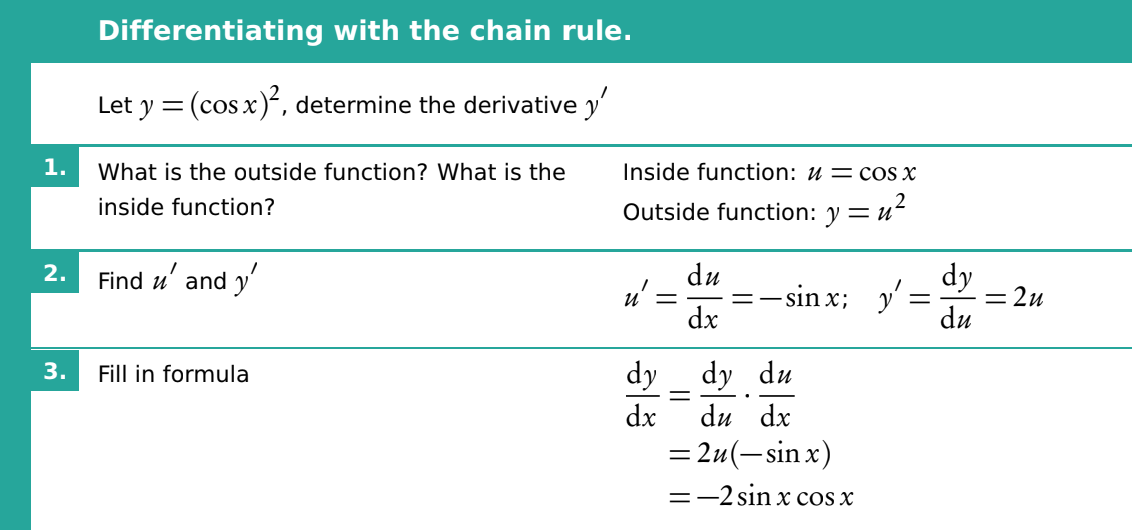
Turning points
| Point | | | |
| Local Min | | 0 | Positive Number |
| Local Max | | 0 | Negative Number |
| Point of Inflection | | | 0 |
| Colour | Green | Orange | Red |
\graph{{-0.1x^{3}+3x:green},{-0.3x^{2}+3:orange},{-0.6x:red},{x=-3.162:black:dashed},{x=3.162:black:dashed}}
Sketching Graphs
Gather information before sketching:
Intercepts:
- x-intercept:
- y-intercept:
Turning points:
- Minima: and
- Maxima: and
- Point of inflection:
Asymptotes
- Vertical: x-value when the function divides by 0
- Horizontal: y-value when x → ∞
Plug the found x-values into f (x) to determine the y-values.
Editors- CD_FER - 979 words.
- joeClinton - 28 words.
View count: 5354